
As summarised earlier by Houses & Holes, the Australian Bureau of Statistics (ABS) has released labour force data for the month of May, which registered a slight decrease in the headline unemployment rate to 5.5% from 5.6% in April (revised up from 5.5%. Total employment also rose by 1,100 seasonally-adjusted, with a 5,300 fall in full-time employment more than offset by a 6,400 increase in part-time employment.
The result beat analysts’ expectations, which had forecast that 10,000 jobs would be lost over the month and an unemployment rate of 5.6%.
However, the headline unemployment rate flattered by a 0.01% decrease in the participation rate to 65.2% (see next chart).
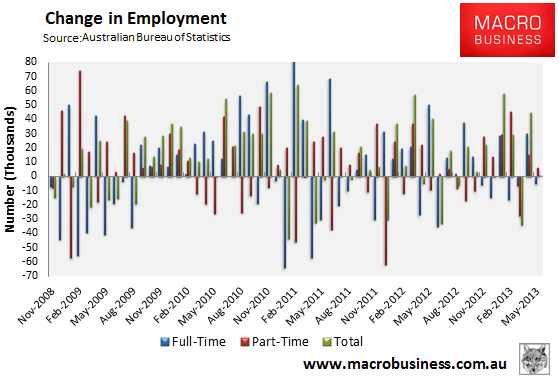
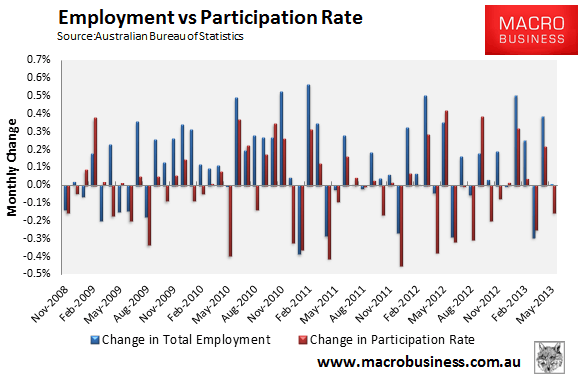
The result continued the steady uptrend in total employment that has been in place since late-2010 (see next chart).
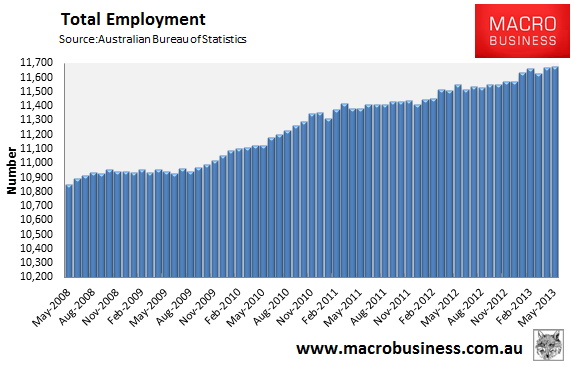
Australia’s employment market continues to rebalance away from the mining states, with New South Wales now leading jobs growth over the past year:
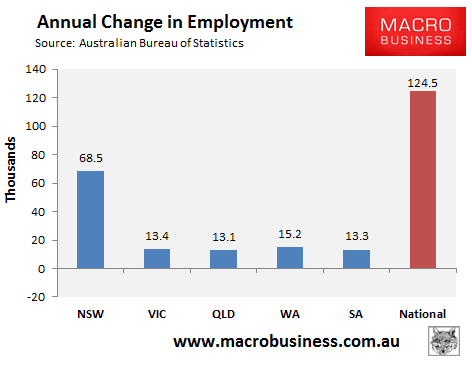
The variance of unemployment rates across the capitals continues to narrow, with the exception of Tasmania, also suggesting the labour market is rebalancing away from mining:
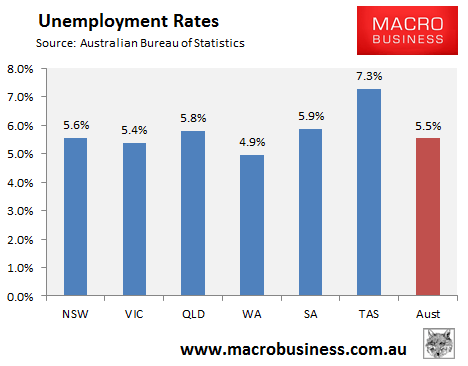
That said, the state seasonally-adjusted figures are notoriously volatile and subject to a big margin of error. As such, the below chart shows the ABS’ trend unemployment rates, which shows Western Australia and New South Wales with the lowest unemployment (but Western Australia’s worsening fast), Tasmania with the highest (and getting worse), and the others close together above the national average:
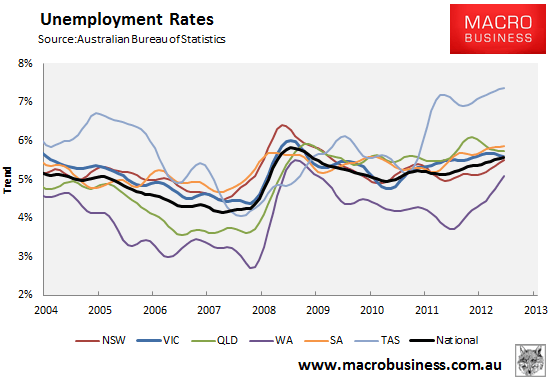
A negative aspect of this release is that the aggregate number of hours worked fell by 0.7% nationally in May and is now 0.2% below the level recorded in May 2012:
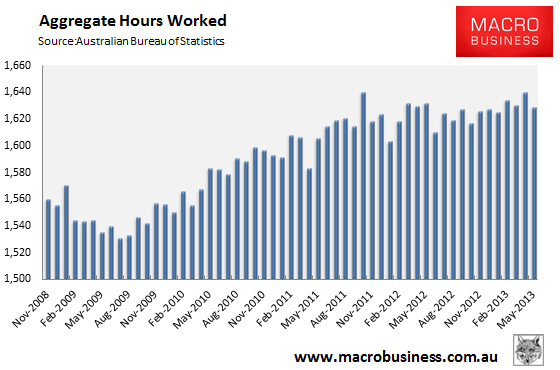
The fall in aggregate hours worked has been driven by Western Australia, where hours worked has fallen by 4.3% over the past year:
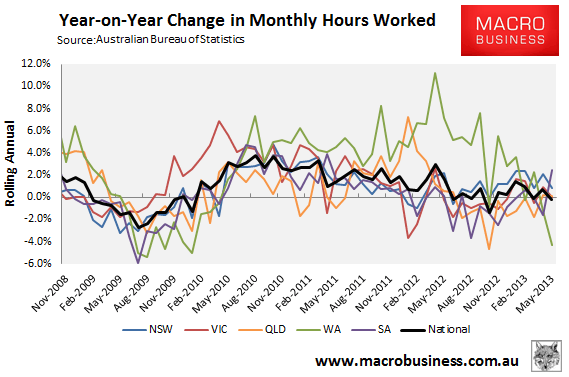
The employment-to-population ratio also fell slightly over the month, but remains in a downtrend:
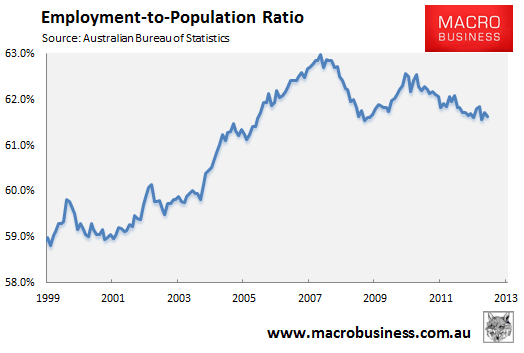
The rolling annual average number of hours worked per employed person also fell by -0.1 hours to 140.4 hours per month, which is a record low:
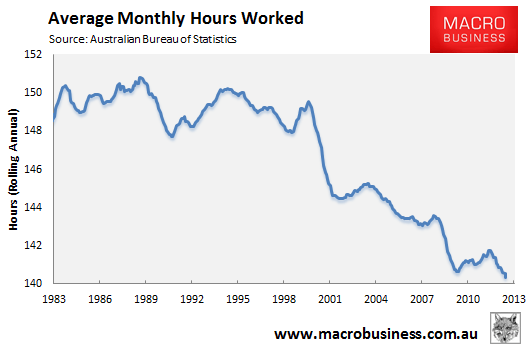
And to wrap up, the below chart summarises the annual change in the key employment aggregates:
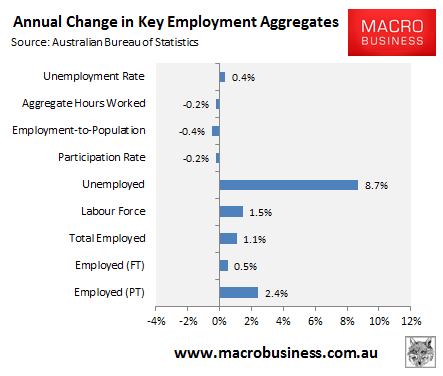
Finally, the ABS released its quarterly underemployment rate, which rose by 0.3% to 12.9%, driven by a 0.7% increase in Western Australia:
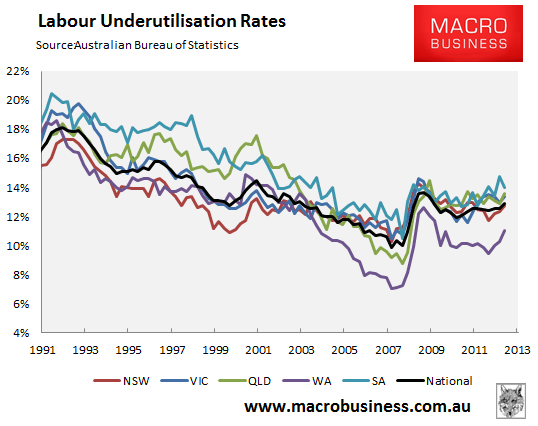
Overall, despite the modest improvement in the headline unemployment, this release shows a continued incremental weakening of the labour market, as evident by: sluggish jobs growth (mostly part-time) that is failing to keep up with population growth; falling aggregate hours worked; and increased labour underutilisation (underemployment). On the positive side, the labour market has become more balanced, with less reliance on the mining sector to drive jobs growth.

